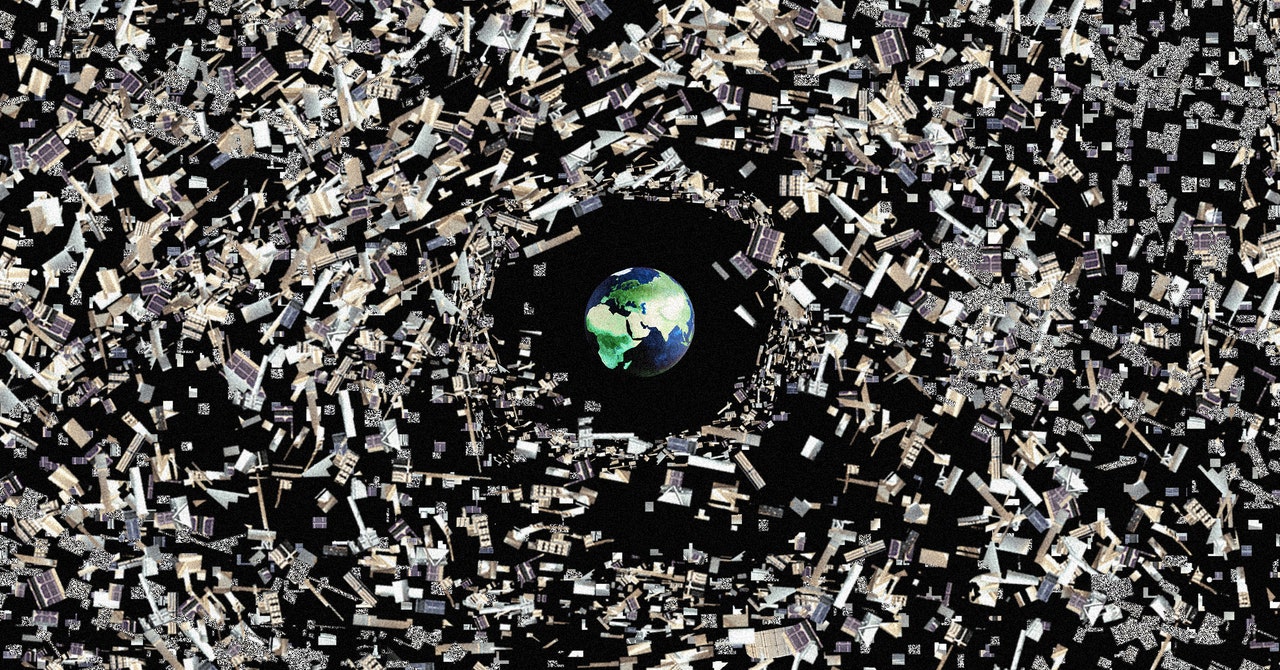five hundred miles above the earth there is a growing layer of waste. Space debris made up of spent rocket bodies and dead satellites is hurtling through space at nearly 18,000 miles per hour. And the US Space Surveillance Network says the layer is growing: The network is tracking about 40,000 objects larger than a few centimeters orbiting Earth today, up from 25,000 in 2019.
When debris collides in low Earth orbit, it can endanger astronauts and spacecraft and destroy active satellites, or even set off a chain reaction and end up in a dangerous belt or cloud of congestion known as Kessler syndrome. In 2016, NASA declared space debris “the greatest threat to spacecraft, satellites and astronauts”.
The problem has become so serious that last week the US Senate Committee on Armed Services discussed space debris next to Russia, nuclear war and the postponement of an intercontinental ballistic missile test.
As the war in Ukraine continues, the security of satellites and their vulnerability to attack from the ground are the subject of national security talks. And it has become more difficult to determine whether satellite transmissions are failing because Russian actors are blocking communication signals to and from satellites or because debris is in the way. A spokesman for the US National Reconnaissance Office declined to comment on attacks on commercial satellites.
During the Senate Committee hearing, US Space Command leader General James Dickinson called commercial space systems “an essential part of the critical infrastructure of the US and vital to our national security.” He believes that recent events in Ukraine show how commercial space operations can deliver crucial services, such as internet via satellite. American companies today have the majority of about 5,000 operational satellites in orbit, and it was Planet Labs and Maxar satellite imagery that allowed the world to see signs of hydraulic warfare in Ukraine and a mile-long convoy headed for Kiev.
According to data collected by the Union of Concerned Scientists, a US nonprofit scientific advocacy organization, more than 80 percent of the nearly 5,000 satellites in orbit are in low Earth orbit. SpaceX’s Starlink and other constellation projects plan to launch tens of thousands of additional satellites in the coming years, dramatically increasing traffic in low Earth orbit and making it more difficult to spot potential collisions.
If these satellites become war targets and are destroyed, the ring of space debris will become much larger. It could also linger for years: Last November, the International Space Station had to dodge debris created during China’s anti-satellite weapons test (ASAT) in 2007. Less than a week later, Russia launched a ballistic missile, fired a Soviet-era Kosmos 1408 satellite in more than 1,500 pieces and proved that the country’s technology doesn’t have to be in orbit to take out satellites. This event created a cloud of debris that is expected to remain in low Earth orbit for years or even decades, according to Space Command.
Russia’s actions led to widespread condemnation. In the US, Secretary of State Antony Blinken said the event signaled behavior that endangers the long-term sustainability of space and “could endanger the exploration and use of space by all nations.”
NASA administrator Bill Nelson accused Russia of endangering cosmonauts, as well as the lives of people from other spacefaring countries who were near the International Space Station at the time. In response, a Russian military spokesman called the US “hypocritical”. The spokesman echoed accusations previously made by Russia’s state news agency RIA Novosti, claiming that the US Air Force’s Boeing X-37B orbital vehicle tests foreshadowed plans to launch orbital vehicles with nuclear warheads attached by 2025.

